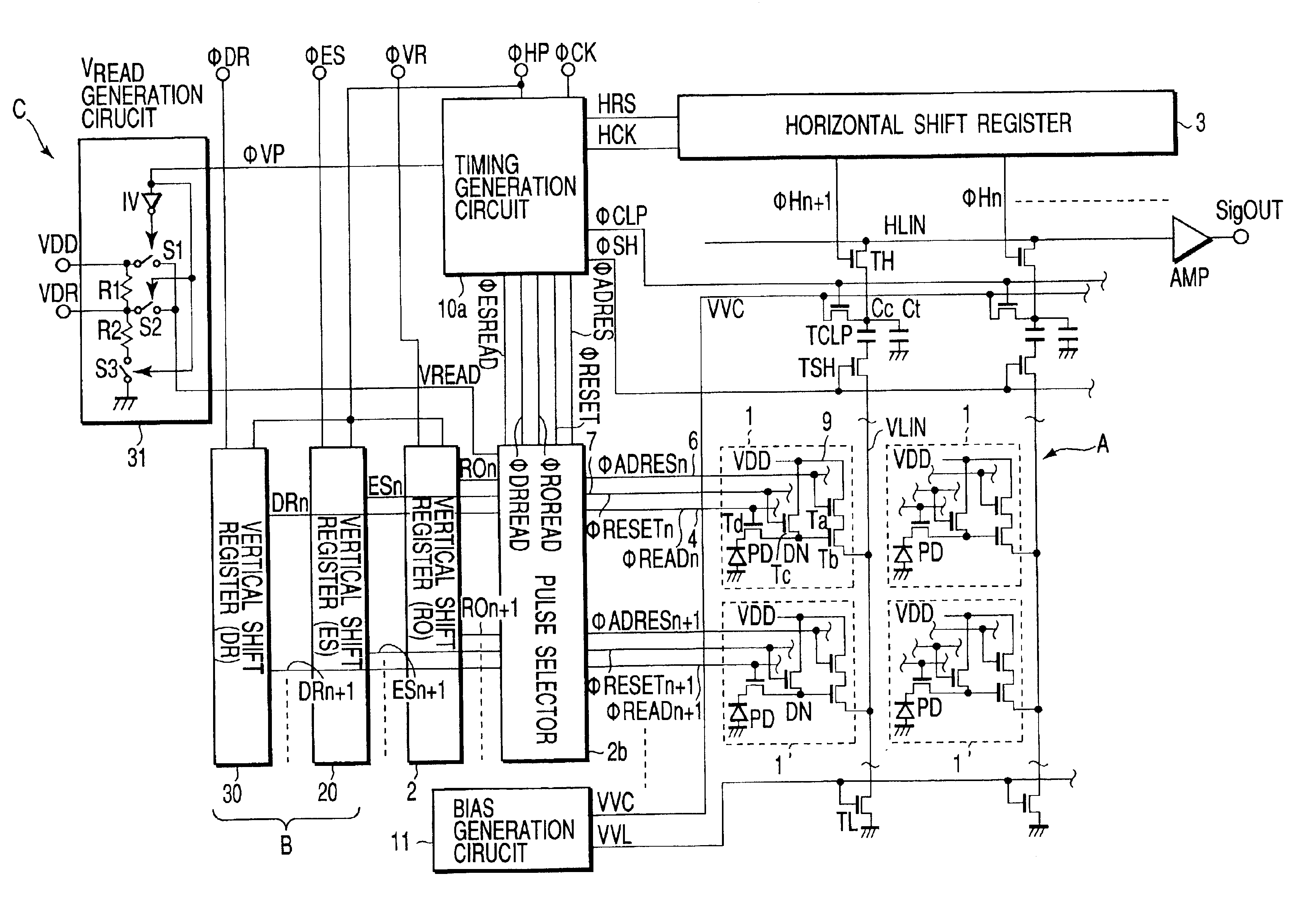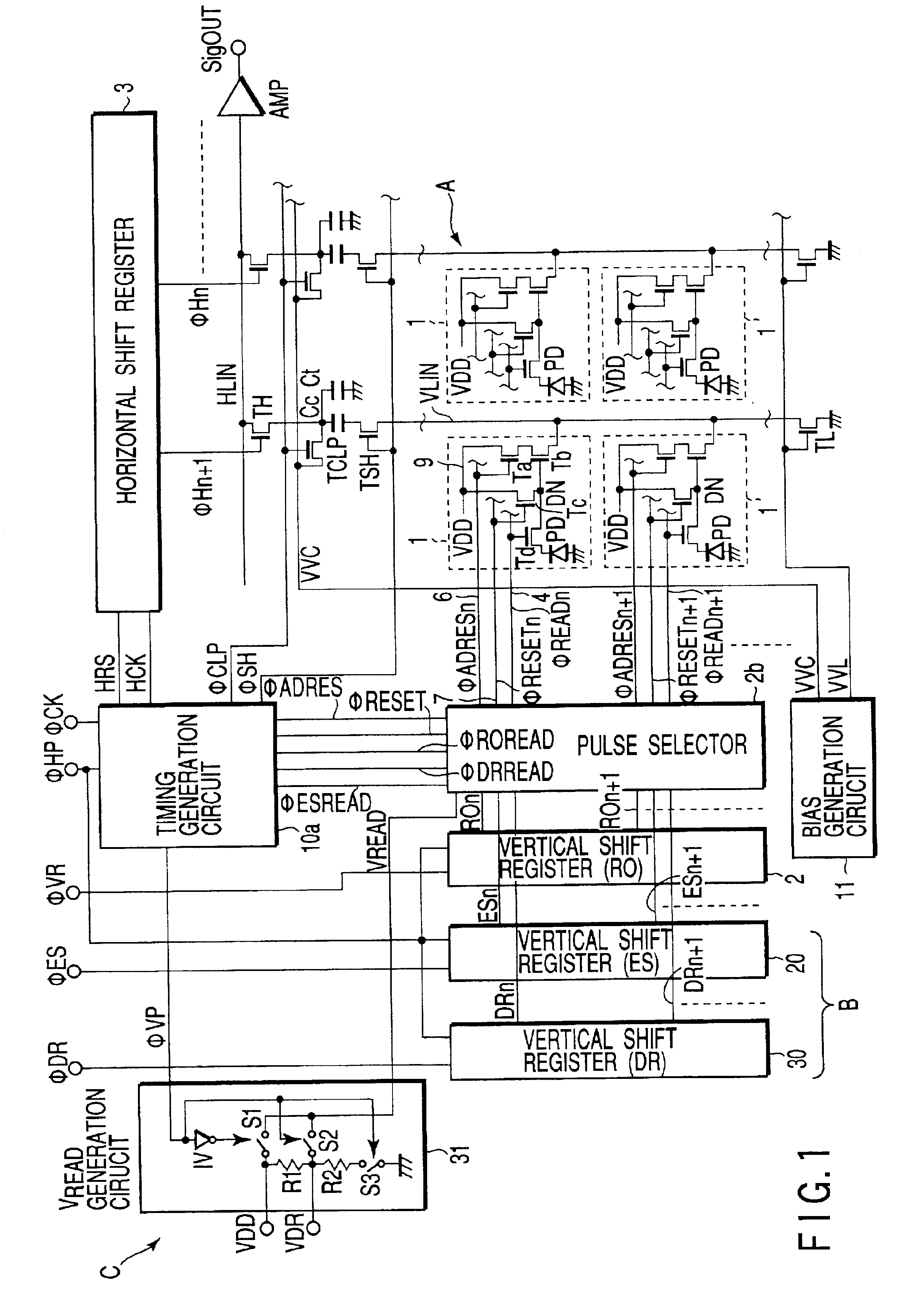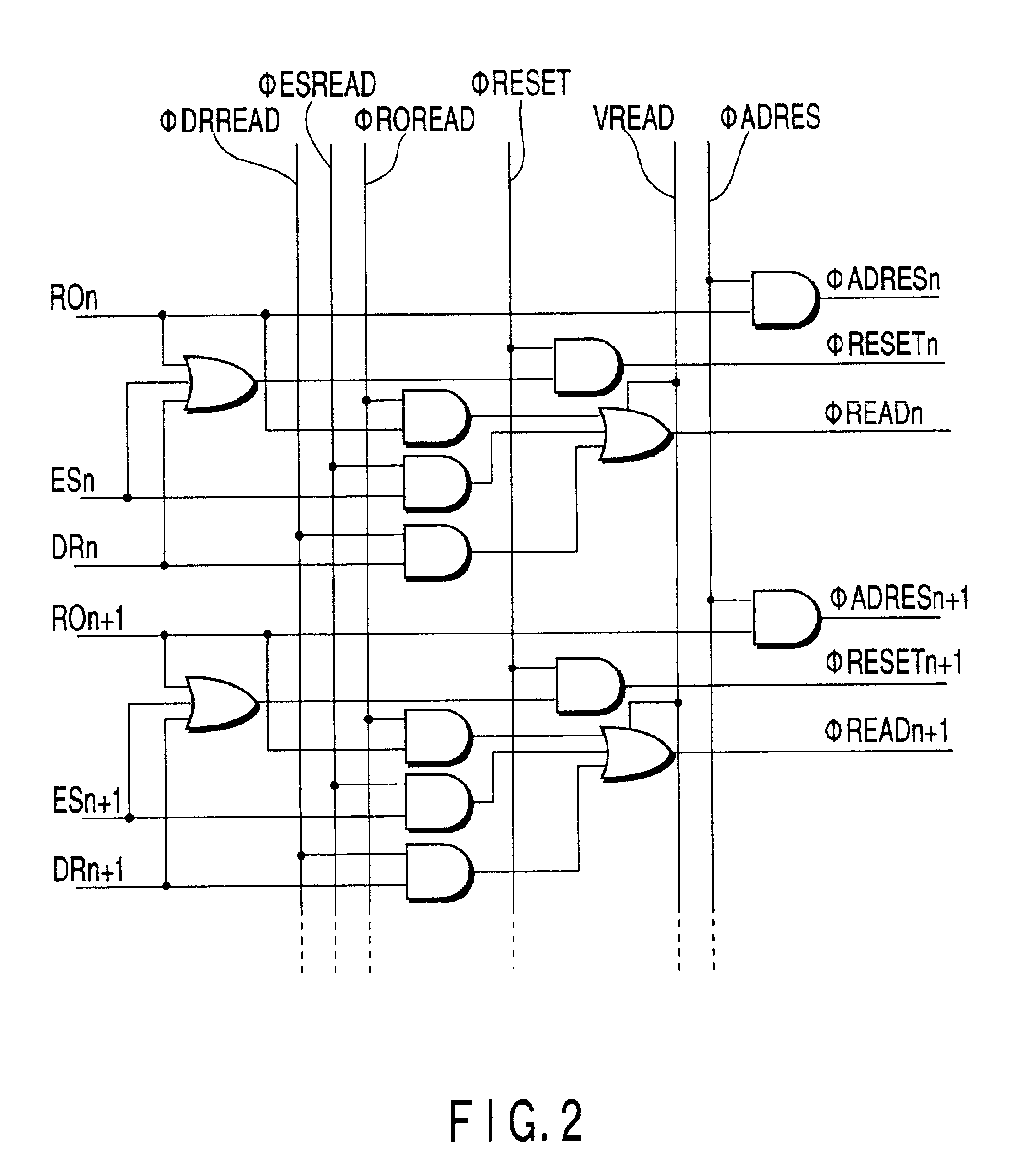Solid-state imaging device with dynamic range control
a solid-state imaging and dynamic range technology, applied in the direction of radio frequency controlled devices, television system scanning details, etc., can solve the problems of low dynamic, inability to perform electronic shutter operation for controlling exposure time, uneven reset potential of vertical signal line vlin of its other end, etc., to achieve a good image and increase the dynamic range of amplification-type cmos image sensor.
- Summary
- Abstract
- Description
- Claims
- Application Information
AI Technical Summary
Benefits of technology
Problems solved by technology
Method used
Image
Examples
first embodiment
[0062]FIG. 1 is a block diagram showing schematically an amplification type CMOS image sensor according to the present invention.
[0063]Compared to the CMOS image sensor shown in FIG. 12, the CMOS image sensor of FIG. 1 is mostly similar to except the following points, and those same as in FIG. 12 have the same reference numerals.
[0064](1) A vertical shift register 30 is provided for generating sequentially pulses DRi (i=. . . , n, n+1, . . . ) of a dynamic range control, based on the external input pulse φDR.
[0065]Namely, the image sensor includes a pulse generation circuit B comprised of three vertical shift registers 2, 20, 30 for producing three pulses ESi, DRi, ROi for respective pixel rows, as a pulse signal source for controlling the readout timing in the readout transistor Td.
[0066](2) A voltage VDR of a readout driving signal is applied to the readout transistor Td corresponding to the pulse DRi of the dynamic range control. In order to set the voltage VDR to a lower voltage...
second embodiment
[0133]FIG. 8 shows schematically a circuit structure of an amplification type CMOS image sensor according to the present invention.
[0134]This CMOS image sensor includes an AD conversion circuit 21 having a noise reduction function, and converts analog signal transmitted to a plurality of vertical signal line VLIN into digital signals by the AD conversion circuit 21 to provide output signals.
[0135]Now, points different from the CMOS image sensor shown in FIG. 1 will be described mainly.
[0136]Namely, in the AD conversion circuit 21 of the CMOS image sensor shown in FIG. 8, a comparator CMP connected to one end of the vertical signal line VLIN for each pixel column is disposed in the horizontal direction. This comparator CMP compares analog signals from the vertical signal line VLIN with the reference signal VREF provided from the reference signal generation circuit 22. This reference signal VREF is, basically, a RAMP wave whose voltage increases with the lapse of time. The comparator ...
PUM
 Login to View More
Login to View More Abstract
Description
Claims
Application Information
 Login to View More
Login to View More - R&D
- Intellectual Property
- Life Sciences
- Materials
- Tech Scout
- Unparalleled Data Quality
- Higher Quality Content
- 60% Fewer Hallucinations
Browse by: Latest US Patents, China's latest patents, Technical Efficacy Thesaurus, Application Domain, Technology Topic, Popular Technical Reports.
© 2025 PatSnap. All rights reserved.Legal|Privacy policy|Modern Slavery Act Transparency Statement|Sitemap|About US| Contact US: help@patsnap.com



